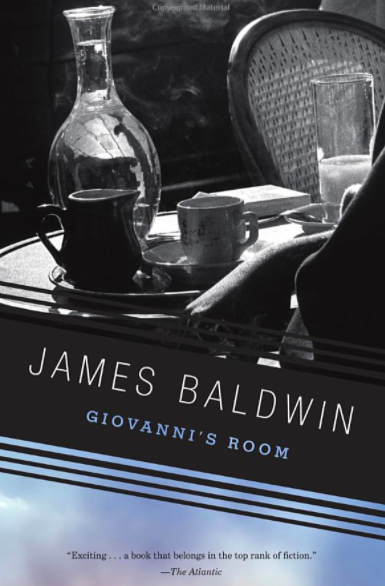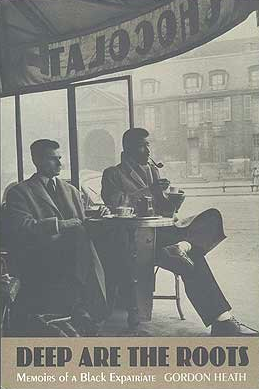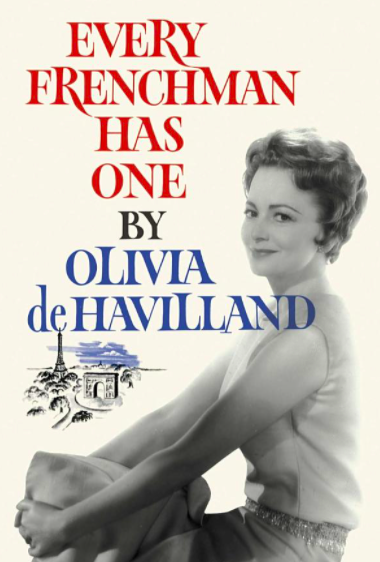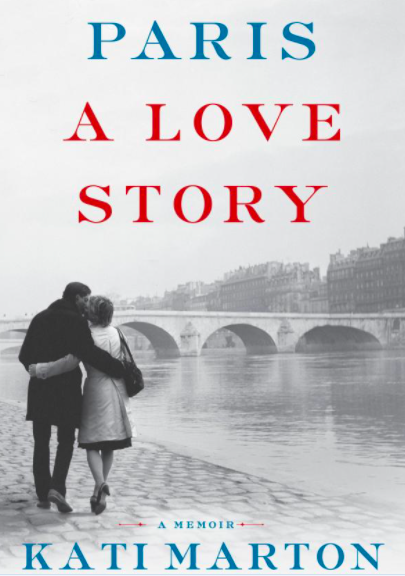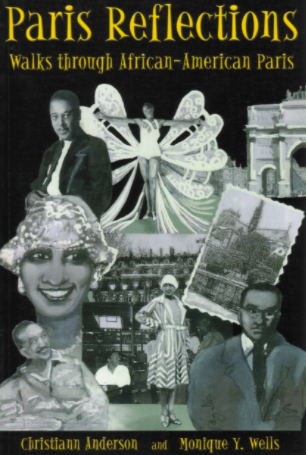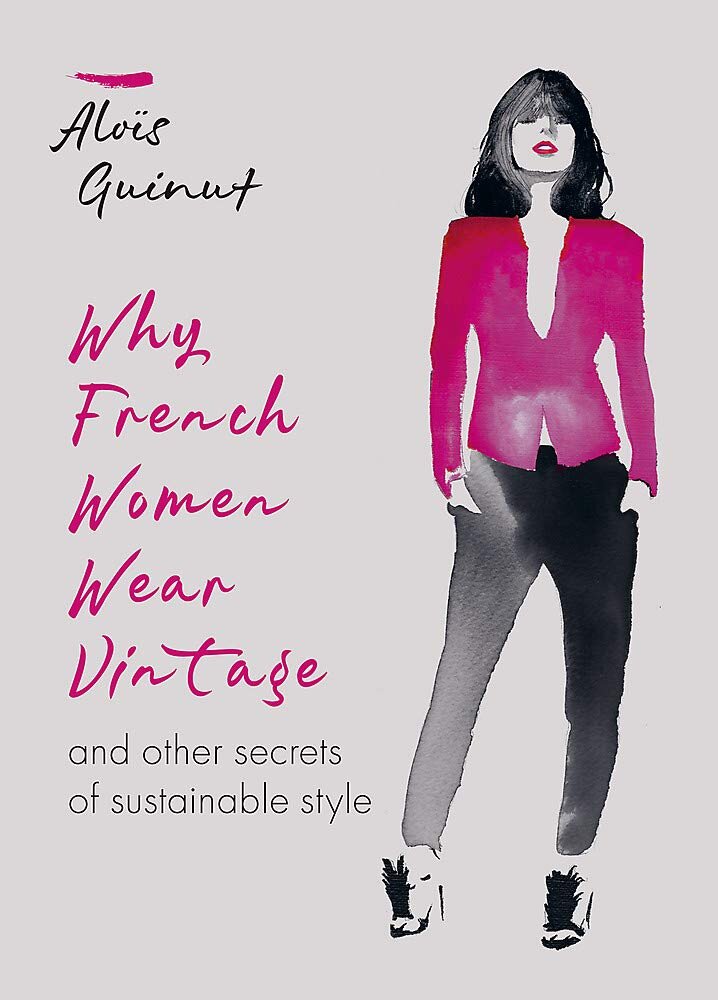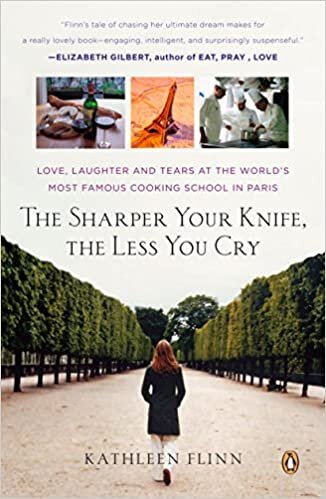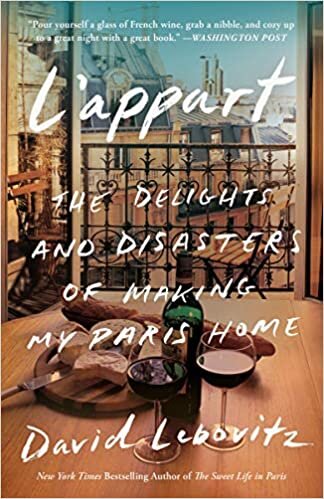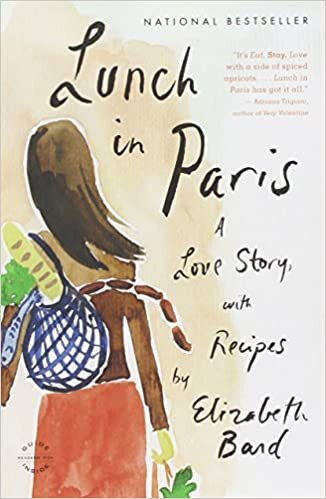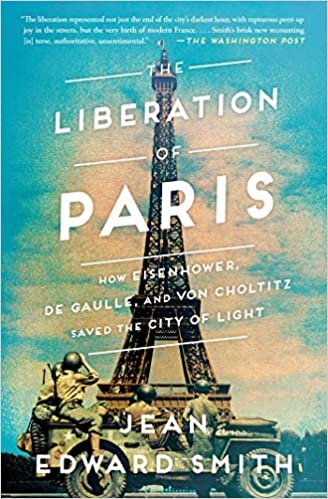Q&A: Author L. John Harris on his new book Portrait in Red: A Paris Obsession, the French passion for garlic, quantum mechanics and the power of synchronicity, and the search for the best croque monsieur in Paris.
Writer L. John Harris is a man of many talents, passions, and avocations—a celebrated author, illustrator, art enthusiast, food critic, café connoisseur, vintage guitar collector, and certified Francophile, to name a few.
In his latest book, Portrait in Red: A Paris Obsession, Harris blends the genres of mystery and memoir, recounting his own unslakable search for the subject and meaning behind an abandoned painting of a young girl in pre-war Paris. Through his journey to produce the portrait’s provenance and authorship—who exactly is The Girl in Red and who was her creator, at least in oil on canvas?—Harris quickly hooks the reader along for the ride with humor and heart.
While exploring the breadth of the European artist communities and styles that thrived in the thirties and weaving his own cerebral curiosities and personal musings on the midcentury Berkeley art scene, Harris draws on his encyclopedic knowledge of contemporary and fine art through a profound philosophical lens, adding rich contextual elements that provide enough food for thought to keep minds active—mine included—long after closing the book.
Read on to discover more about The Girl (who now happily hangs in Harris’ home).
Q&A
TCA: What was it about this painting that initially captivated you and compelled you to begin this journey?
LJH: I think it was the shock of seeing such a well-done portrait out on the sidewalk in a pile of discards, and the gaze of this young girl that penetrated me on some deep level. James Joyce called this shock “aesthetic arrest.” I had no idea that it was the beginning of a multi-year journey that would lead to a book. It took me several minutes to grasp the magnitude of this seemingly chance encounter on the first day of my Paris mission to write about the iconic croque monsieur for a food magazine. After I started posting images and thoughts about the portrait on Facebook and getting responses from artists, writers, art historians, curators and collectors, I suddenly found myself going back to my days as an art student in college. My obsession with food segued back, thanks to The Girl, to my obsession with art—both appropriate obsessions when in Paris.
What surprised you the most during this journey?
So many things were surprising, but especially the serendipity of so many of the threads weaved in throughout the journey. Most especially, the date of the painting (1935 and specifically the number 35) in connection to so many of the related elements mentioned within the story:
-The address of the building where I found the painting (no. 35 Rue Guénegaud)
-The year (1935) that Walter Benjamin published his essay on Art in the Age of Mechanical Reproduction and the powerful aura of original one-of-a-kind paintings vs. copies.
-The year the Nazis introduced their red and black swastika flag—the two colors that dominate The Girl in Red.
-The year the term “whodunit” entered our English vocabulary to describe a detective mystery.
-The year Einstein wrote a paper trying to discount the possibility of “spooky action at a distance” within quantum mechanics. Spooky action at a distance is another term for the acausal connections that define serendipity and Carl Jung’s idea of synchronicity.
Who would you dream of being The Girl’s creator, if you could choose?
Degas and Manet. Their portraits were representational—just before Impressionism, Cubism, Expressionism, etc., but they incorporated modernist elements, like heavy black outlines, unfinished or loosely painted backgrounds, direct frontal gazes, roughly applied paint.
What is the greatest impact that the book (and this painting) has had on your life?
They have brought me deeper into my own inner emotional/psychological life, and my deep connection to art in my earlier years, more than in my previous work—mostly about food—that was perhaps, at its best, witty, entertaining and original, but offbeat. Portrait is a more formal work, perhaps more mainstream; a hybrid memoir with elements of the novel, like character and dialogue, that reveal my inner life more openly.
As an art enthusiast, who do you consider to be the greatest artist of all time?
I don’t think there can be one greatest anything. Every era has its greats that express and/or transform that era. I’ve always been a Picasso fan (despite his mysogyny) for his sheer genius and impact on the modern world, but there are many others high on my list from the modernist period—Bonnard, Braque, Dubuffet, Cezanne and some of the surrealists, and Giacometti’s sculpture. All of these modernists abandoned mimetic representation in favor of an expressive form. Duchamp and Warhol from the postmodern period spoofed high art. The late Fluxist artist, Daniel Spoerri combined art, food and literary work and blurred the distinction between art and life. Gertrude Stein, Henry Miller and Anaïs Nin wrote about bohemian life in Paris and merged art and life, helping to create the Francophilian love of Paris for my generation. I had contact with Miller and Spoerri, both of whom loved food and knew my book on garlic.
What would you consider to be your “natural habitat?”
The café and the ocean—one nurture, the other nature.
What is your idea of pure happiness?
Nothing on my schedule for a whole day; I can do exactly what I want to do.
What would you consider to be your greatest accomplishment, personal or professional?
Personal: my beautiful sons with big hearts, minds and talents.
Professional: The 6 books I’ve published and the ones I’ve yet to publish.
When did you first realize that you were a Francophile?
I think it happened before I realized it. My grandfather, a Polish Jew who escaped to France through Germany in the 1890s served in the French Foreign Legion. Then when he made it to San Francisco, he got help from the local French community to start his textile business. My father took over the business and would go to France to purchase fine interior fabrics in Lyon. He loved French food. Then, my older brother went to the Sorbonne and I visited him in Paris as a teenager. So it was natural that I would come to love French culture—food, art, architecture, and finally, café culture. I wrote a book about that too, Café French: A Flaneur’s Guide to the Language, Lore and Food of the Paris Café.
Did you ever determine the best croque monsieur in Paris?
Yes, it turned out that the best one I had was the most expensive. Café de la Paix, 25 euro. It was made from scratch rather than pre-made and heated up like many cafés do. It had all the traditional ingredients and elements of the true croque—béchamel sauce, comte or gruyere cheese, jambon de Paris, pain de mie. What made it special was that a circle was cut out of the middle of the croque and served separately. The void left in the center was filled with dressed salad greens. Also great pommes frites were included. There were some other good traditional croques at half the price, but without the glitzy presentation.
As a food writer, you took a keen interest in garlic. What are your thoughts on the relationship between garlic and French cuisine?
I could write a whole book on the subject. In fact, I did! Two books: The Book of Garlic (translated to L’Ail in French) and The Official Garlic Lovers Handbook. The French have a great but cautious respect for garlic. In the south of France where garlic is grown, it’s truly celebrated as a powerful vegetable in its own right, not just a subtle flavoring in haute cuisine. Aioli, the garlic mayonnaise served with vegetables in the Grand Aioli ritual, is known as “the butter of Provence.” Spain, Italy and Greece have their versions of aioli, as do all Mediterranean countries, but in Berkeley, where food became an obsession in the 1970s and 80s, especially at the renowned Chez Panisse, the southern French connection to garlic took hold, especially because just south of Berkeley is Gilroy—the “garlic capital of the world.” In San Francisco, French cuisine arrived along with the Gold Rush. So France is, for me, the spiritual home of garlic, if not its native home (Central Asia).
(Contd. below)
Chatting via Zoom with author L. John Harris about all things Paris and Portrait in Red.
How would you describe your perfect day in Paris?
A café in the morning for breakfast. A café in the afternoon for work. A café in the evening to meet with friends for, or after, dinner. Walking in between, from café to café, through the stunning parks and vibrant streets of Paris.
What do you miss most about the United States when you’re abroad?
Lox, bagels and cream cheese. My kitchen. The mild weather in California.
What do you miss most about Paris after you leave?
The visual/social spectacle—architecture, churches and their free classical music concerts, café culture, museums everywhere, newspaper kiosks and shop window displays.
What is your idea of a hidden gem that most overlook when visiting the city?
I think people head for the major museums—Louvre, d’Orsay, etc. I prefer the smaller museums and especially the house museums, like the Delacroix Museum on Rue de Furstemberg in the 6th, and the Balzac Museum on Rue Raynouard in the 16th. I find these house museums charming, full of the spirit of the artist and their work.
Have you had any moments of heureux hasard lately?
Heureux hasard (a French term which I use in my book instead of “synchronicity”—Carl Jung’s term, which is rather clinical sounding in English) continues to swirl around The Girl. Just a few weeks ago, the New York Times did a fashion piece on red bonnets being an “in” look, with photos of models wearing red hats. Red hatted girls and women are “in the air”—not merely coincidence. Making art based on one’s synchronistic discoveries (inner and outer) is the secret sauce of creativity.
What’s next for you?
I’m working on a book about the history of Berkeley’s notorious food revolution of the 1970s and ‘80s, which led to what is known today as “California cuisine.” But projects keep popping up to slow down that book. The Book of Garlic—my first book, released exactly 50 years before the publication of Portrait in Red—has a new audience (young garlic lovers—farmers, cooks, folk medicine advocates) and I’m going to revise it. I’m also working on a project that takes me back to my art school days—a memoir focused on the year 1968, and the art commune I lived in for a year. Good and crazy times.
Order Portrait in Red here.
Summary:
“While wandering the streets of Paris, L. John Harris finds an abandoned, unfinished, and strangely compelling painting. The subject: a girl wearing a bright-red head covering, fixing her viewer with a foreboding gaze. The painting bears no signature, only the date: January 12, 1935. Harris, a food journalist and illustrator, embarks on a multi-year quest to uncover the story behind this painting. His sleuthing has given birth to Portrait in Red, a wide-ranging exploration of art and its enduring mysteries. With wit and a contagious enthusiasm, Harris traces unexpected connections between Paris on the eve of World War II, his bohemian life in the San Francisco Bay Area, the aura of original paintings, the magic of found objects, and the aesthetics of a perfect croque monsieur.”
Author Bio:
L. John Harris, born in Los Angeles, studied art and literature at UC Berkeley in the 1960s. Seduced by Berkeley’s food revolution in the 1970s, Harris worked at several iconic shops and restaurants and wrote The Book of Garlic (1974). He launched his cookbook company, Aris Books, in 1980 and his “Foodoodles” cartoon byline in Bay Area magazines led to a series of illustrated memoirs: Foodoodles (2010), Café French (2019) and My Little Plague Journal (2022). Mr. Harris coproduced with PBS in 2001 the film Los Romeros: The Royal Family of the Guitar and serves as the curator of the Harris Guitar Collection at the San Francisco Conservatory of Music. Harris’s next book is a history of Berkeley’s “gourmet ghetto,” to be published by Heyday.



